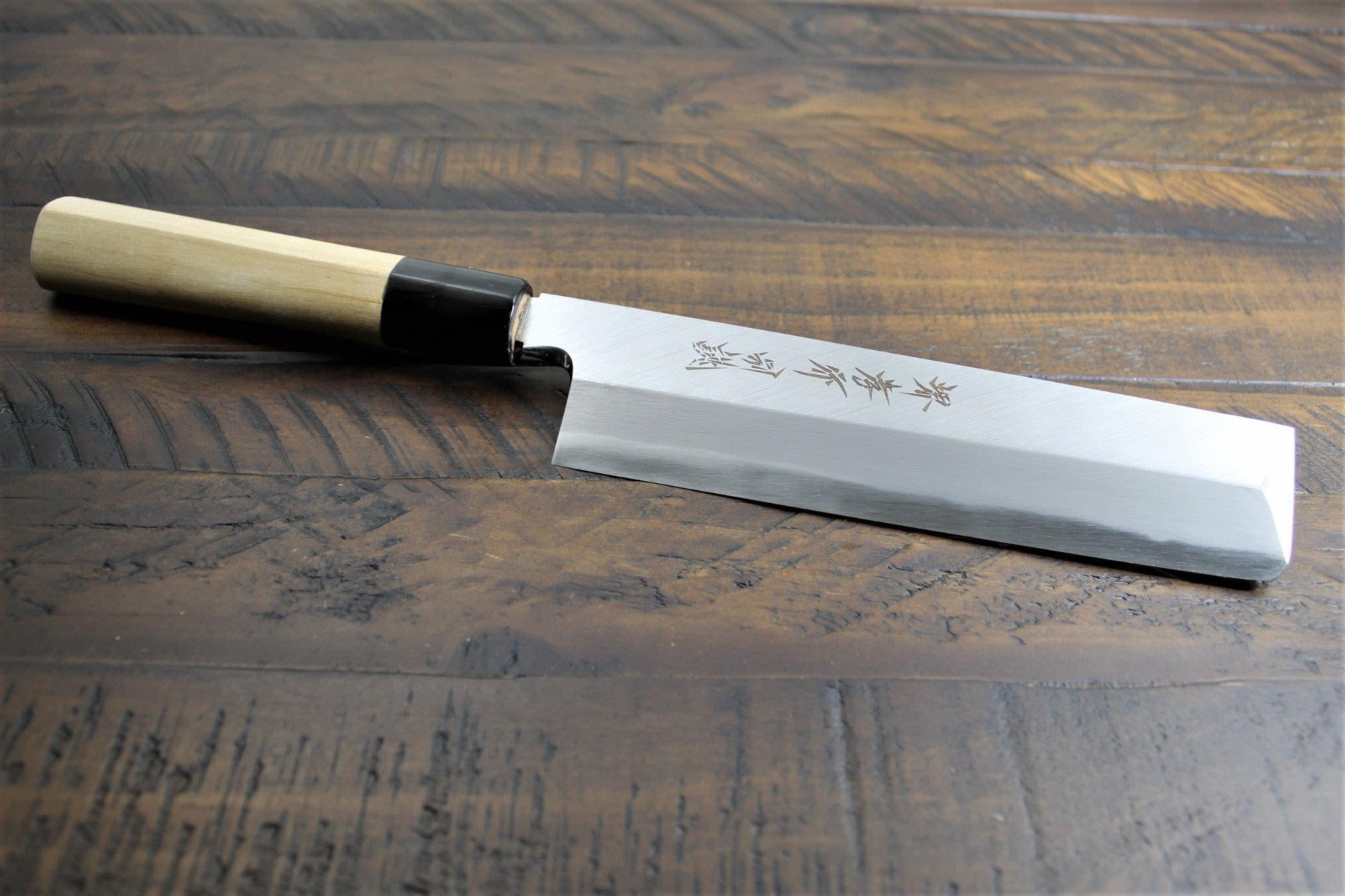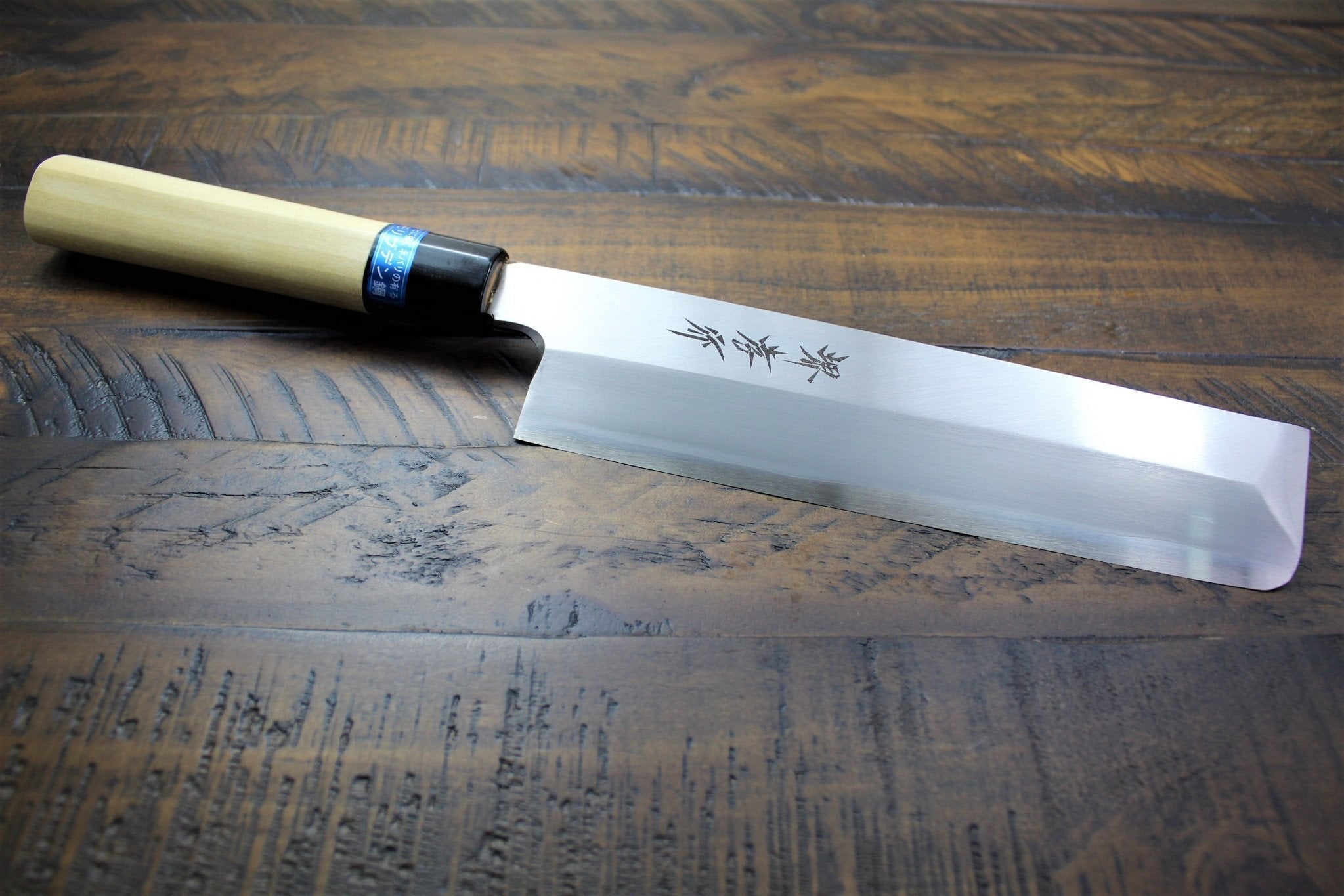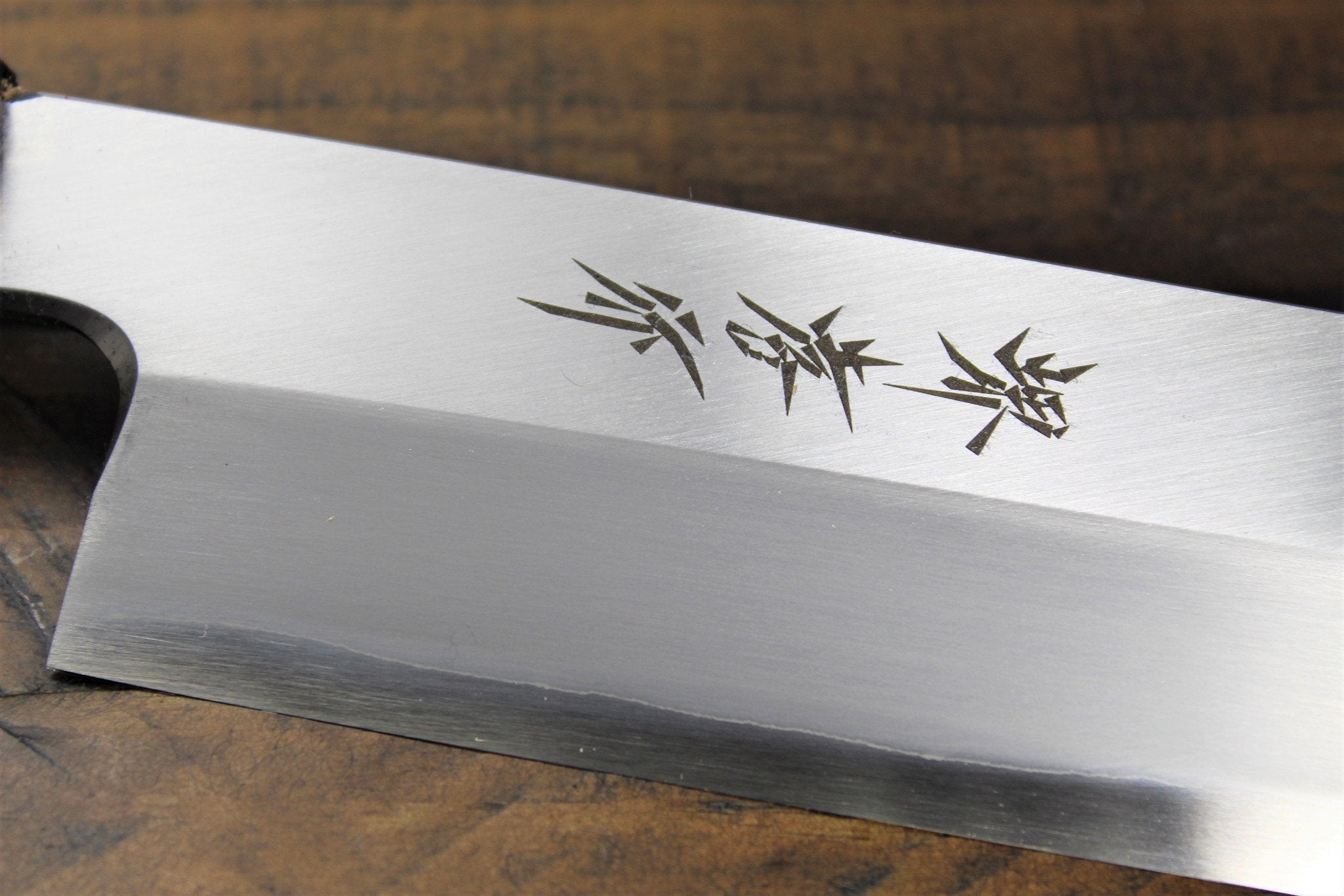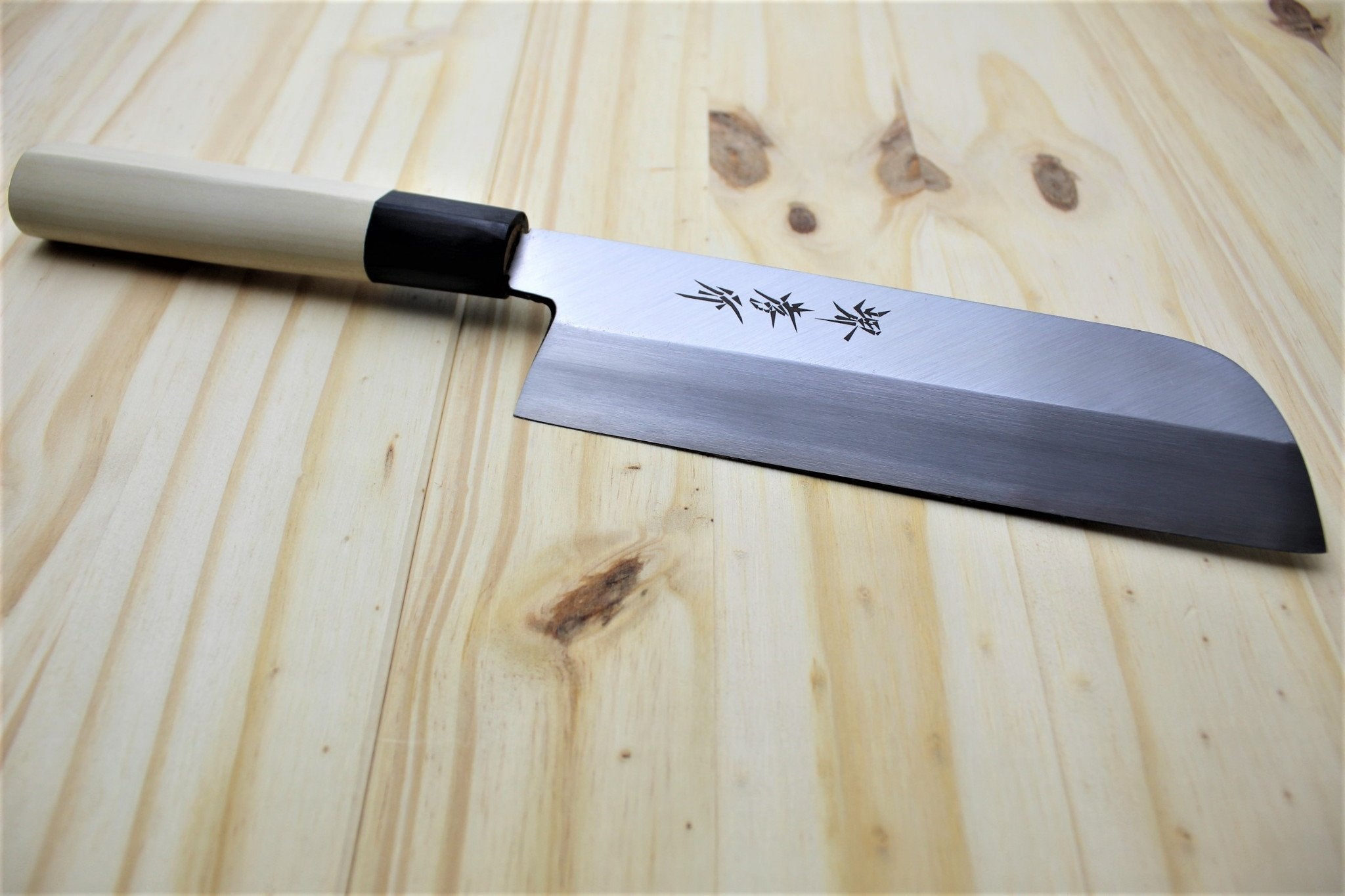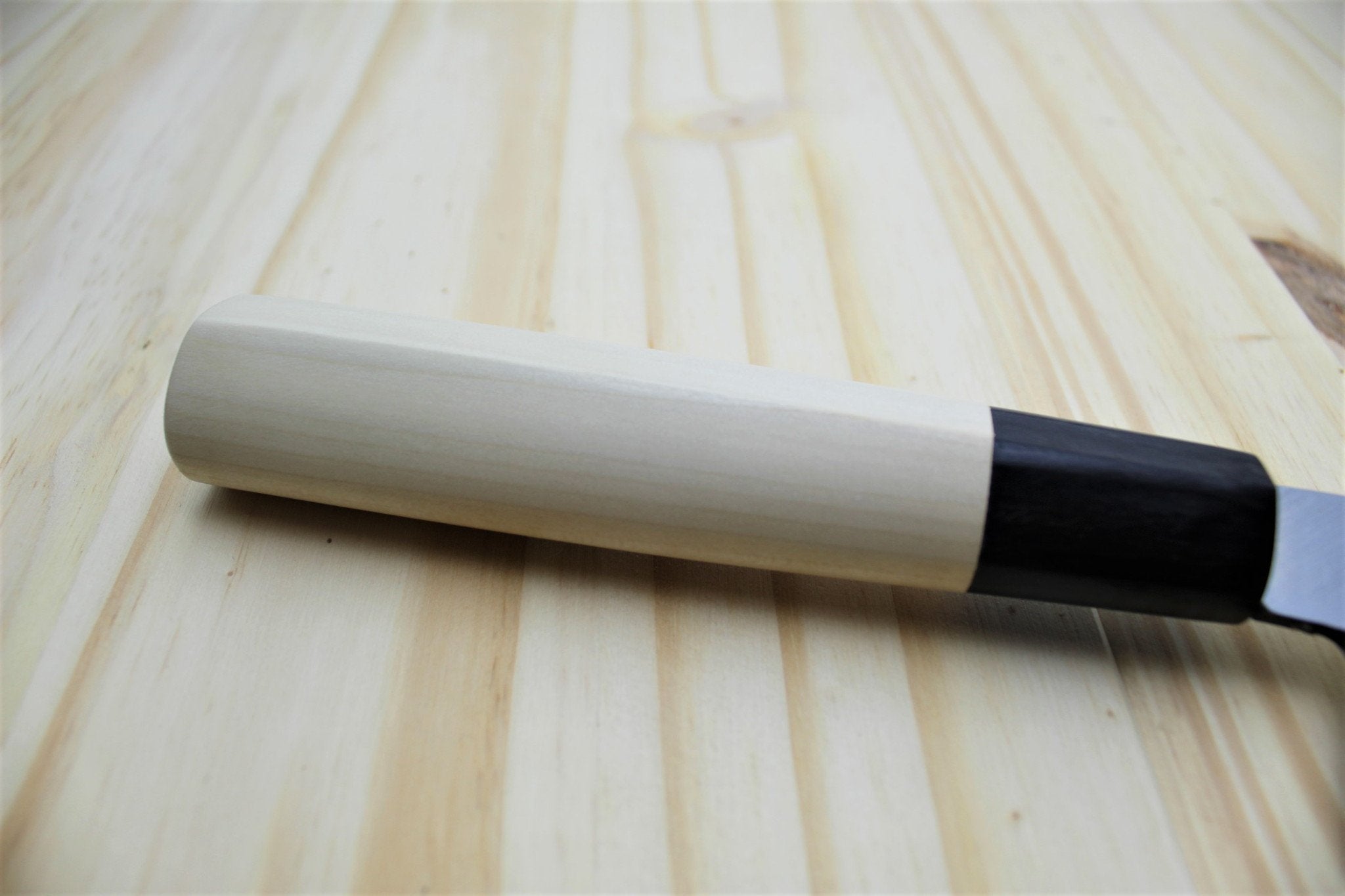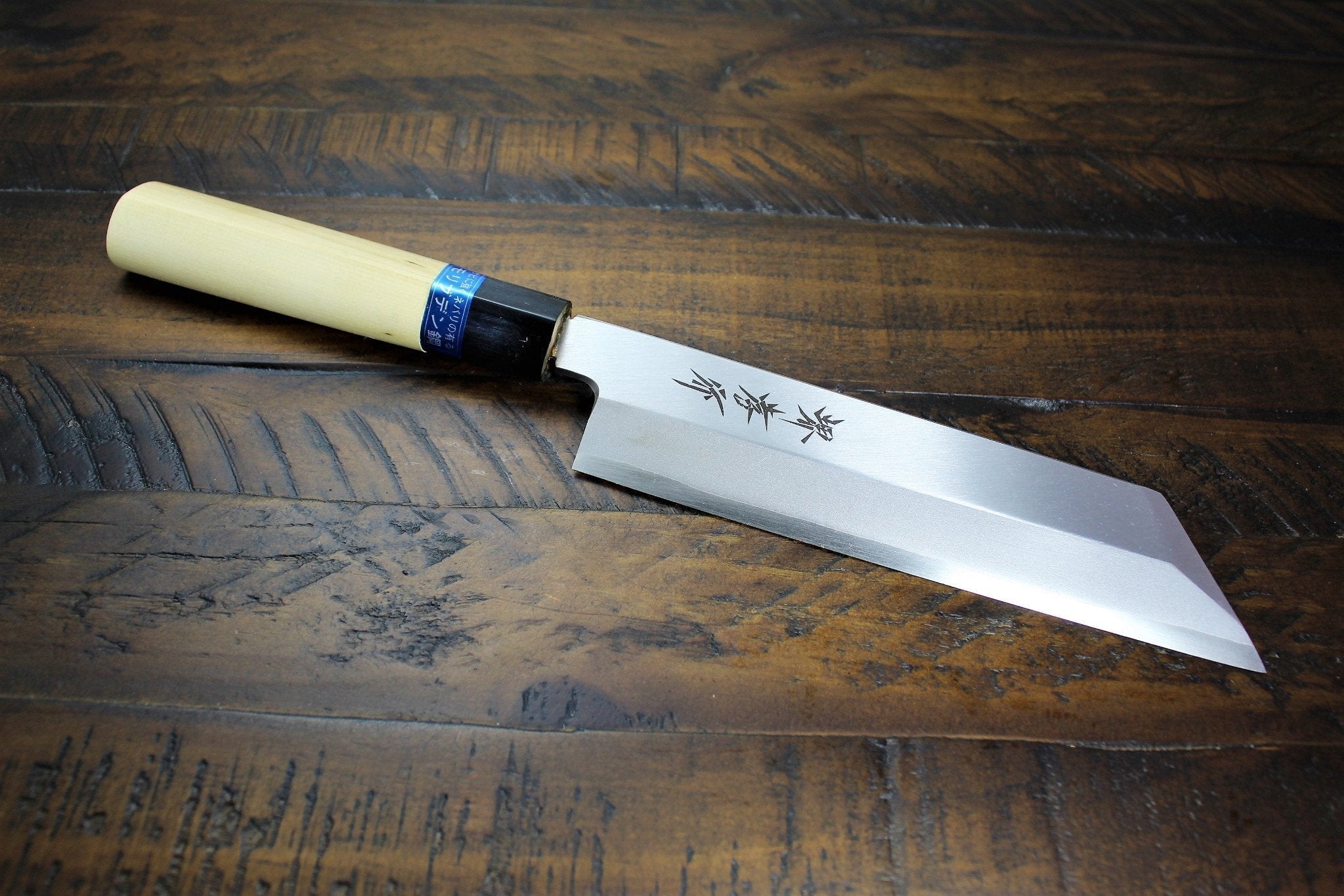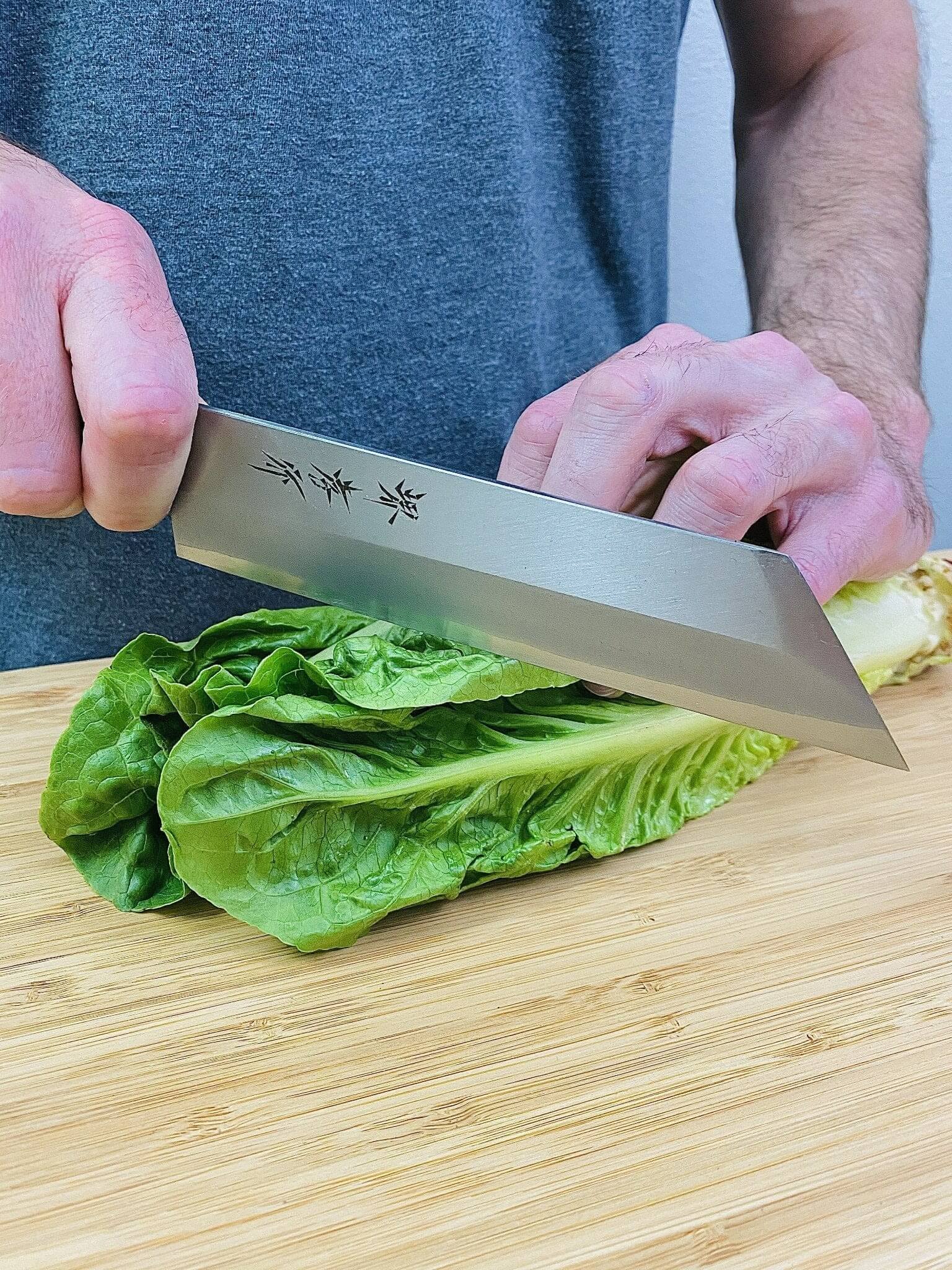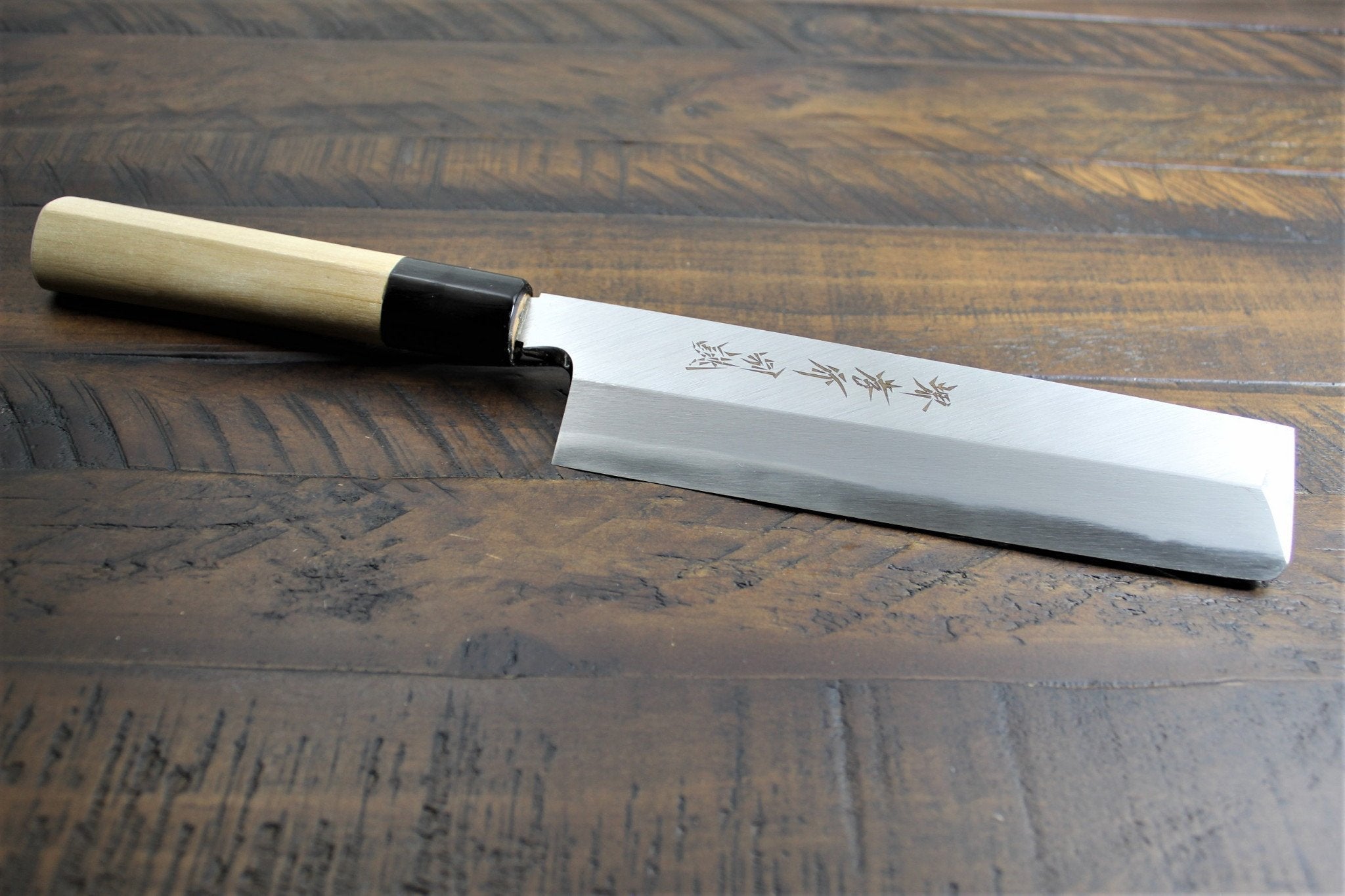Filters
History of the Usuba Knife
Usuba is a combination of the Japanese words “usui’ meaning thin and “ha” (or “hamano”), meaning blade. It’s literally the thin-blade knife, specifically designed to give you paper-thin slices, even with soft, squishy ingredients like tomatoes.
The Usuba originated in Tokyo. It’s one of the basic knives that professional Japanese chefs master and is a mainstay of traditional restaurant kitchens in Japan. Historically, it has been used for performing specialized cutting techniques, such as Katsuramuki (“rotary peeling”) and Kazarigiri (“decorative cutting”).
Usuba and Kamagata Usuba are hand-forged by master blacksmiths. If you hear the rhythmic hammering of metal in any of the knife-making villages there is a chance that the blacksmiths are working on a traditional knife like the Usuba. Heating the metals in the forge over glowing charcoal, hammering the metal, and repeating until the metal begins to resemble what will soon become a functioning work of art.
Shop Finely-Crafted Japanese Kitchen Knives at Hasu-Seizo
There’s a reason the Usuba is so highly revered by Japanese chefs. Its unique craftsmanship lets you prepare your ingredients in a way that few other kitchen tools can. Its extremely sharp chiseled edge is honed to perfection by master bladesmiths.
We recommend stainless steel or White Steel #2 for the Usuba vegetable knife. The latter, in particular, improves on the Usuba’s design to give you an even sharper edge for those perfect, translucent cuts of produce. Explore our range of Japanese kitchen knives, including the Usuba, Petty, Gyuto, Deba, Yanagiba, and more. Each one is handcrafted by traditional artisans in Japan and will prove an excellent addition to your knife collection.
History of the Usuba Knife
Usuba is a combination of the Japanese words “usui’ meaning thin and “ha” (or “hamano”), meaning blade. It’s literally the thin-blade knife, specifically designed to give you paper-thin slices, even with soft, squishy ingredients like tomatoes.
The Usuba originated in Tokyo. It’s one of the basic knives that professional Japanese chefs master and is a mainstay of traditional restaurant kitchens in Japan. Historically, it has been used for performing specialized cutting techniques, such as Katsuramuki (“rotary peeling”) and Kazarigiri (“decorative cutting”).
Usuba and Kamagata Usuba are hand-forged by master blacksmiths. If you hear the rhythmic hammering of metal in any of the knife-making villages there is a chance that the blacksmiths are working on a traditional knife like the Usuba. Heating the metals in the. . . Show More >

